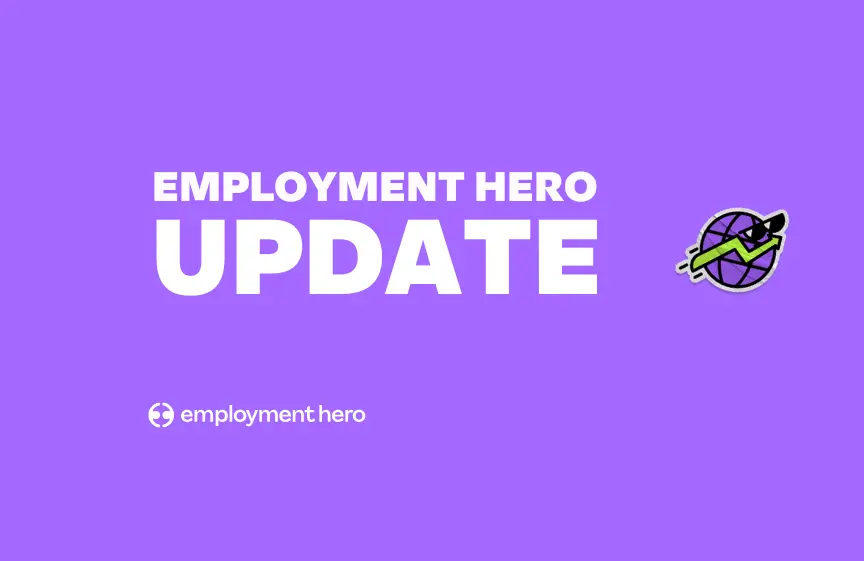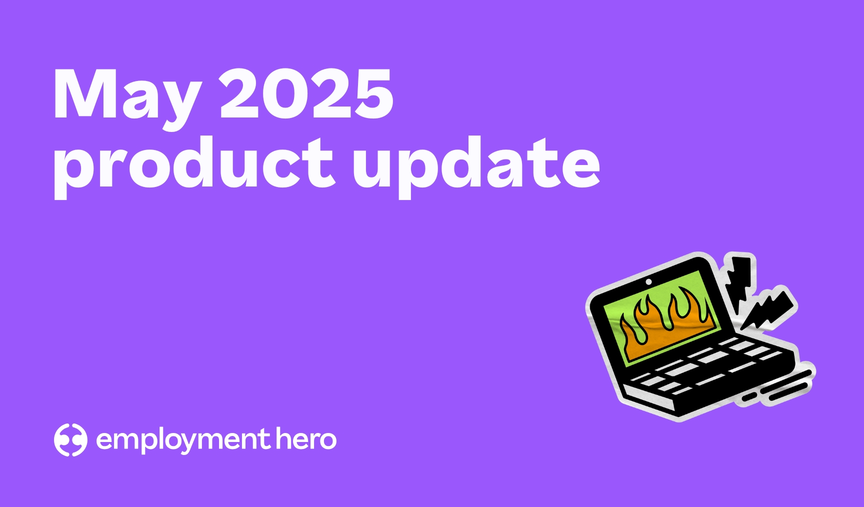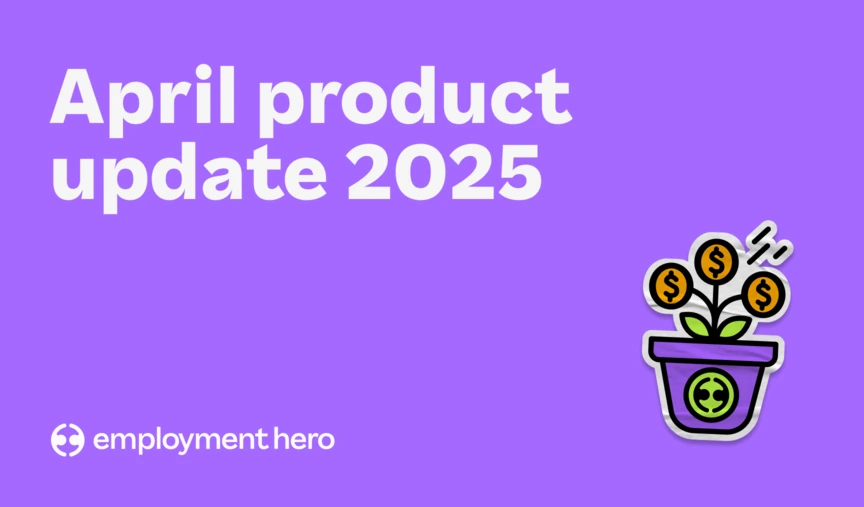7 things HR leaders can do to start 2024 strong
If you’re an HR leader, now is the perfect time to try something new in your company.

Contents
Happy new year! We’ve said goodbye to 2023 and toasted the entrance of 2024. Now it’s time to pack up the jandals (during the work day anyway) and get back to business.
A new year is always a great opportunity to take stock and make big improvements for the months ahead, and 2024 is no exception. If you’re an HR leader, now is the perfect time to try something new in your company, whether that’s steps to improve the workplace culture or new technology to streamline basic tasks. We’ve got seven ideas to get you started…
1. Set ambitious goals
All successful companies have ambitious goals for their future – it’s part of how they drive their growth and continue to thrive. That’s why it’s important your business has goals too, both larger organisational goals and individual goals for each employee.
As an HR leader, you can spearhead this by working with both the company leadership team and management. Take time to assess how goals are currently set and consider how they could be effectively managed and measured for the year ahead.
One popular goal-setting approach for successful companies is the use of OKRs – objectives and key results. OKRs start with one big ambitious goal for the company (eg. a huge revenue target). Then, smaller leadership goals are assigned in order to achieve that, then team specific goals, then individual employee goals. It’s kind of like a family tree in its structure, taking the big target at the top and then breaking it down into the key results required to eventually reach it. It’s a great way to ensure progress on both an individual and company-wide scale and can be tracked through performance management software.
When you’re setting goals and key results, don’t forget to follow the SMART format – goals should be Specific, Measurable, Achievable, Relevant and Time-Bound. This not only makes it easy for you to see success, but it means that these goals are easy to track in one-to-ones and team meetings.

2. Embrace feedback
No company is perfect – perhaps your culture has some problematic areas, internal communications could be better or employees are dissatisfied with a lack of career progression. As daunting as it can be to ask for the cold, hard truth, your company will never improve and become successful without candid feedback. And no, impromptu discussions at the water cooler won’t quite cut it.
Make 2024 the year where you truly dig into the good, the bad and the ugly of your company – and act on that feedback too. Consider how feedback is currently collected and see if there’s ways you could improve it. That includes ensuring that the feedback is stored somewhere secure and accessible, so it doesn’t just get collected and forgotten.
For example, you could aim to send out monthly or quarterly employee happiness surveys, to get both measurable data and anonymous feedback on any issues perceived in the business. You could also ensure that employees are spending sufficient time talking to their line managers, whether that’s regular team catch ups or one-to-one meetings. All of these are great ways to identify any potential issues that could become much bigger problems down the line.
360-degree feedback is also a great way to ensure you’ve got strong feedback loops between all employees, as it incorporates thoughts from direct reports and peers, as well as from managers. It’s designed to give employees a more rounded view of their professional development and how they’re performing as part of a team. All feedback is good feedback if it’s helpful, so now is the time to embrace it company-wide!

3. Bring in new employee benefits
As the cost of living continues to bite in New Zealand, many employers are reaching a pivotal point when it comes to pay. While employers are facing financial pressure, their employees are also really feeling the strain, leading to an uncomfortable face-off. Money talks – according to our Talent Insights report, 48% of employees would consider staying in their current role should they receive a pay rise. It’s a real risk to employee retention if companies won’t offer salary reviews.
That said, we know that for many businesses, making company-wide salary increases isn’t always easy in this economy. If that’s the case, this could be an opportunity to explore what other benefits you could offer to both keep employees on board, and attract new talent.
Benefits might include monetary bonuses and rewards for work done well, free or subsidised private health care or gym memberships, or additional leave on top of the statutory requirements. This is the right time to talk to your business’s leadership team and see what they’d be open to offering.

4. Explore automation through technology
There’s a good chance that by now, you’ve experienced some of the recent AI developments, whether that’s borrowing a couple of paragraphs from ChatGPT or speaking to a chatbot on a company website. AI and automation can help all businesses in some way and it can help your company too.
The world of HR and payroll technology is starting to incorporate automation and AI in a way that could transform operations permanently. From automating pay runs to instantly matching candidates to job openings, there’s a world of opportunity out there to make your job easier.
Take this time in early 2024 to explore what’s on offer. HR software like Employment Hero is designed to be a HR manager’s favourite colleague, offering a central source of information and a platform with a host of features and AI-enhanced processes. You’ll be glad you gave it a go when you get all that time back for the strategic stuff.

5. Examine the career paths on offer
While salaries are top of mind for many employees at the moment, some are also examining how their current roles affect their future career. In our Talent Insights report, 28% said they were proactively trying to improve their professional skill set. If you want to retain employees, you should seriously consider what you offer your team in terms of professional development, and improve it if required.
For example, creating a company-wide document that details standard career paths in the organisation will give clarity to those employees who are keen to progress. When paired with career progression plans and examples of achievement at the different levels, it can also give them measurable examples of top performance to work towards.
You might also want to consider offering learning and development opportunities. This not only could bring new skills into the work at your company but it could have a positive impact on employee satisfaction. Don’t worry, you don’t have to hit the books yourself and create training programs – there’s some really great learning management systems on the market that can be easily rolled out to your team for self-directed learning.

6. Complete a data check
Now, this one isn’t quite as fun as our other suggestions but sometimes you can’t avoid the admin. Use this time to take stock of the employee data you hold on file and make sure it’s all up to date. That includes updated visas, relevant certifications and policy acknowledgements. All of these can be easily missed in the busy season so it pays to take a little time to check everything is correct.
If you’re using HR software like Employment Hero, a lot of that admin is covered for you and it’s just a case of checking the data. For example, Employment Hero can show how many employees have current or expired certifications, and make it easy to send out reminders to the relevant employees on the platform.
If your platform also has employee self-service features, you can also ask employees to check their own details and amend them if required. This again takes a ton of time and emails off your to-do list.

7. Take time to consider headcount planning for the year ahead
With ambitious goals, future-forward technology and exciting career paths, 2024 could be a big year for your business. This is also a good time to assess your current headcount – is your team the right size to take on the months (and years) ahead? Those aforementioned feedback loops can come in really handy here, as you’ll have to work proactively with leaders and managers to assess whether they’ll need new teammates.
Of course, should you identify some talent gaps in your organisation, it’s time to get into recruitment. Make sure you’re clear in your advertising and hiring, and that you’re putting out an appealing impression of your business (with those benefits you’ve just added too!).
Recruitment is never a one-and-done process either, especially as your business continues to grow. Savvy HR managers build active pipelines of top talent, so they don’t have to start from scratch with each new vacancy. Tools like SmartMatch make it super easy to proactively build your talent pipeline without ever needing to post a job ad. Get work ready candidates suitable for your company delivered directly to you and save on job ad costs. You can then reach out to those candidates, start meaningful conversations and fast-track the whole hiring process. Find out more about SmartMatch here.
Related Resources
-
 Read more: SEEK Cut the Cord. Here’s What We’re Doing About It.
Read more: SEEK Cut the Cord. Here’s What We’re Doing About It.SEEK Cut the Cord. Here’s What We’re Doing About It.
Seek is ending Employment Hero’s API access. Read about what we’re doing and how we are building a faster and…
-
 Read more: Product Update: May 2025
Read more: Product Update: May 2025Product Update: May 2025
Follow our May 2025 product update as we share all of the latest and greatest features we’ve released over the…
-
 Read more: Product Update: April 2025
Read more: Product Update: April 2025Product Update: April 2025
Follow our April 2025 product update as we share all of the latest and greatest features we’ve released over the…











